| Srl | Item |
| 1 |
ID:
129218
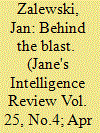

|
|
|
| 2 |
ID:
150659


|
|
|
| 3 |
ID:
125310
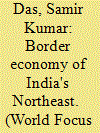

|
|
|
|
|
| Publication |
2013.
|
| Summary/Abstract |
Border trade perhaps is the answer - only if we realize that there is a larger moral economy of border trade the gains of which far outweigh its meagre economic returns. Doesn't the moral economy of border trade force us to revisit both the dominant discourses of national security and functional integration and see how they mutate and transform under present conditions?
|
|
|
|
|
|
|
|
|
|
|
|
|
|
|
|
| 4 |
ID:
106639
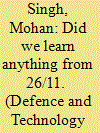

|
|
|
| 5 |
ID:
130231
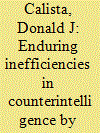

|
|
|
|
|
| Publication |
2014.
|
| Summary/Abstract |
A lot of time we are chasing shadows, but it's better to do that than find out later you let something get by. (An FBI field agent-Type I Error or a false positive). 1
The best chance for success [terrorists] have is to get somebody who is not a visitor [to] come in as a permanent resident or citizen, who knows the culture and how to move around, who doesn't have a record, so as not to get picked up by a database. (A former senior U.S. intelligence official-Type II Error or a false negative). 2
These two citations reflect divergent responses to the governance structures of terror organizations that continue to be subjects of interest and debate among scholars and practitioners. The operational character of terrorism remains essential to the development of strategic initiatives by counterintelligence (CI) agencies. To position CI more advantageously certain concepts from New Institutional Economics (NIE) might be utilized. 3 NIE's central formulation of principals and agents assumes that people make rational choices in determining whether to plan their transactions (relationship costs) into one of two kinds of configurations: market (decentralized) versus non-market (centralized) endeavors. Effectively, the challenge is to determine which transactional method offers greater prospects to achieve efficiency. Inherent limitations (externalities) of time, place and resources complicate these choices. Those involved can be divided into owners (principals) and workers or suppliers (agents). In fulfilling any agreed upon duties, transaction costs then center on the degree to which principals undertake monitoring the behavior of agents for possible shirking-referenced by NIE as the "agency problem."
|
|
|
|
|
|
|
|
|
|
|
|
|
|
|
|
| 6 |
ID:
103566
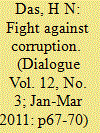

|
|
|
| 7 |
ID:
118115
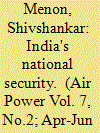

|
|
|
| 8 |
ID:
131603
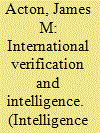

|
|
|
|
|
| Publication |
2014.
|
| Summary/Abstract |
Both national intelligence agencies (NIAs) and international verification organizations (IVOs) attempt to assess compliance with arms control treaties. Their strengths and weaknesses are complementary. Because IVOs are seen as legitimate, they are able to conduct on-site inspections to verify declared activities and to confirm or disprove allegations of clandestine cheating. NIAs are more flexible and have a greater ability to uncover preliminary evidence of clandestine activities on which further investigations can be based. Such investigations require NIAs to share intelligence with IVOs. While this kind of intelligence sharing is generally permitted by arms control agreements, it is controversial. Nonetheless, it appears to have become more common in recent years, particularly during the International Atomic Energy Agency's investigation of Iran's nuclear program. While intelligence sharing creates risks for both IVOs and NIAs, it is ultimately critical to the effective verification of arms control agreements and steps can and should be taken to ensure it becomes more common and less controversial.
|
|
|
|
|
|
|
|
|
|
|
|
|
|
|
|
| 9 |
ID:
146581
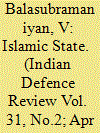

|
|
|
|
|
| Contents |
Competition among fundamentalist groups could push each of them to outdo others who would evolve in a constant state of ‘one-upmanship’. There are already strong indications of such a threat emerging in India. Incidentally, the Al Qaeda’s first cell in the Indian subcontinent was recently uncovered in Sambhal. Given this discovery, the Islamic State’s growth in India will lead to competition among like-minded groups such as Al Qaeda in the Indian subcontinent, which would spur them on to unleash more violence in different parts of India. Constituted by a literate membership, driven by hardcore ideology, the Islamic State in India has essentially become a new brand of terrorism which is as yet unseen in the annals of political violence.
|
|
|
|
|
|
|
|
|
|
|
|
|
|
|
|
| 10 |
ID:
114734
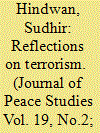

|
|
|
| 11 |
ID:
110608
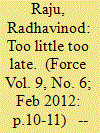

|
|
|
| 12 |
ID:
110609


|
|
|
| 13 |
ID:
130232
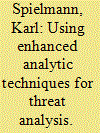

|
|
|
|
|
| Publication |
2014.
|
| Summary/Abstract |
This is intended as an instructional supplement to a methodology I proposed in my earlier article "Strengthening Intelligence Threat Analysis." 1 Through the presentation of a hypothetical case study, I hope to facilitate analysts' use of that proposed methodology by walking them through the major tests that comprise its assessment process.
Accurately determining the nature and likelihood of a threat from terrorists or state actors can be very difficult, with high costs for failure. This proposed methodology is a tool to help analysts better provide clear, timely, and well-substantiated warning to key decisionmakers. Its assessment process has three tests, which build on each other to determine the strengths and weaknesses of different possible views on a threat. The first two tests yield important interim results, affording early intelligence inputs for decisionmaking. When completed, the testing provides a numerical basis for ranking competing views, enabling more precise and transparent judgments to be made on a threat's probability than is common practice.
|
|
|
|
|
|
|
|
|
|
|
|
|
|
|
|